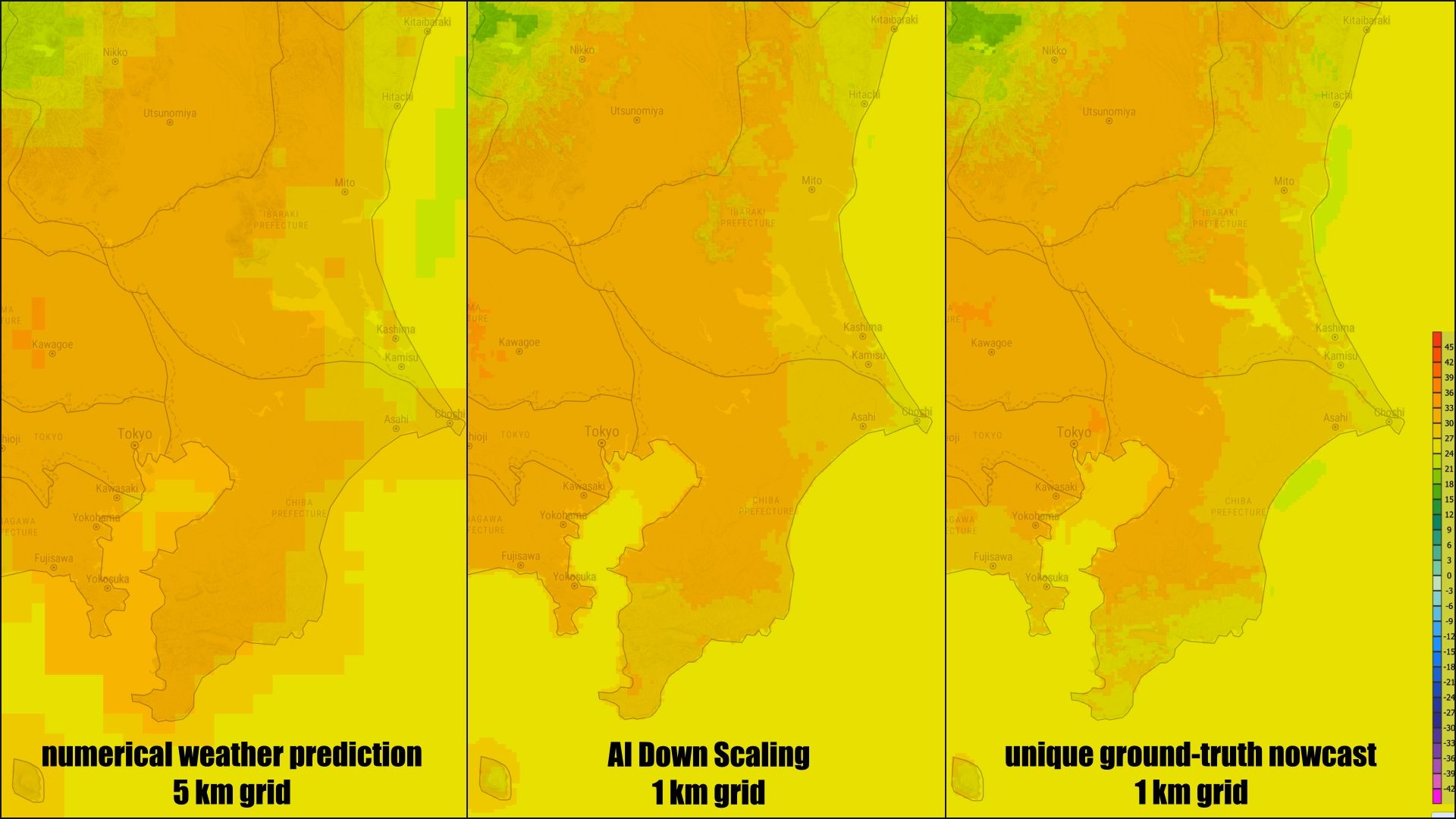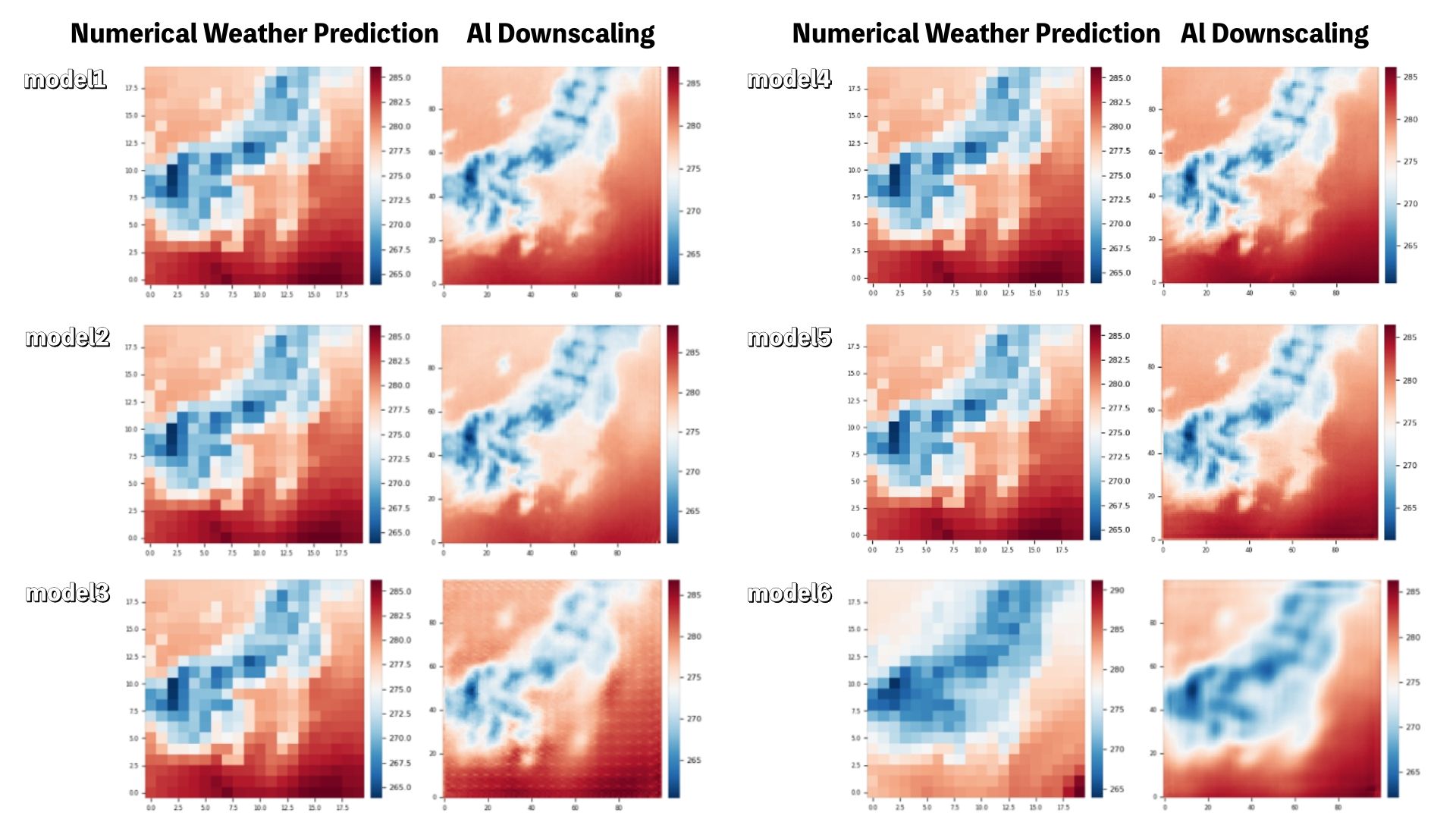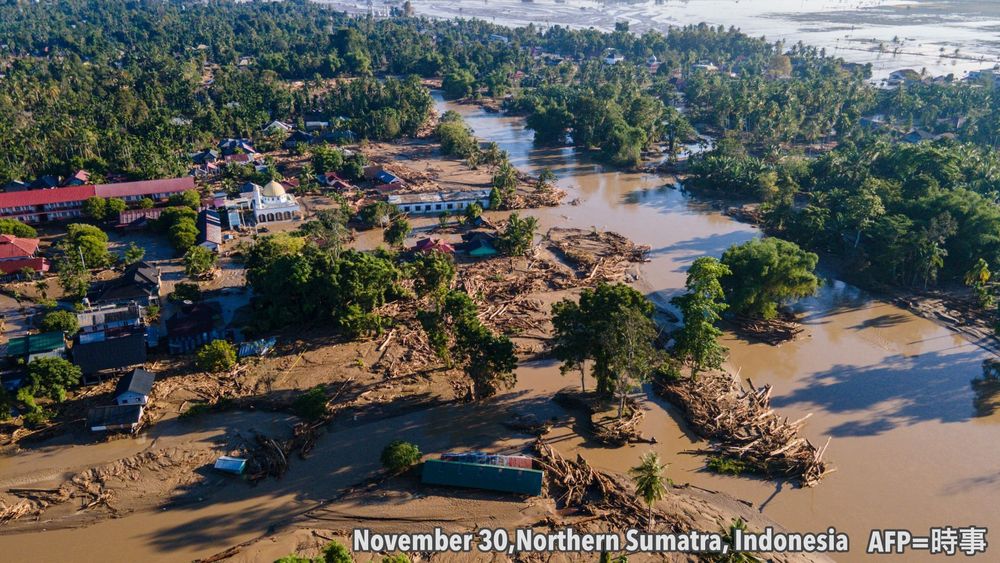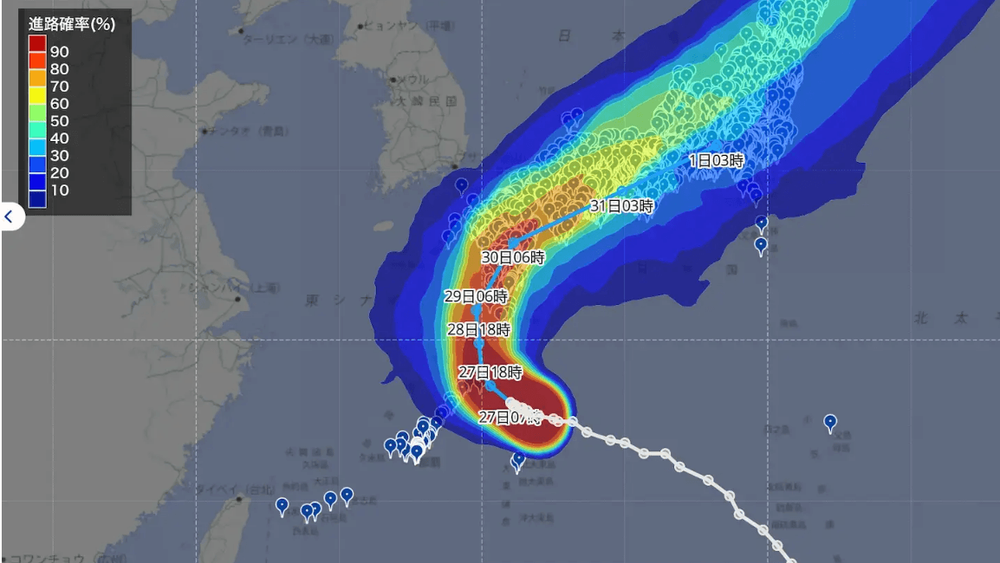September 26, 2025
Creating High-Resolution 1 km Forecasts with Our Proprietary AI Downscaling Technology
“Do I need an umbrella today?” “It just started raining…What should I do?” Weather forecasts are essential to our daily lives, and the more accurate they are, the more comfortable our lives become. At Weathernews, we are dedicated to delivering forecasts that are both highly accurate and high-resolution, providing information that truly supports people in their day-to-day decisions.
In this article, we spoke with Fuki Kudo from the Forecast Center, who is working to improve forecast accuracy using AI. He shared insights into the behind-the-scenes process of generating the predictive data that powers all of Weathernews’ services.
How Weathernews Builds Forecasts: AI Downscaling to Correct Model Biases
The foundation of every forecast is a numerical weather prediction (NWP) model developed by national meteorological agencies. These models divide the entire globe into grid cells of 5–20 km, with supercomputers calculating the state of the atmosphere in each cell to predict the future. This forms the core technology behind weather forecasting.
At Weathernews, we don't simply use these model outputs as-is. Instead, we perform downscaling to convert data to 1 km grids, apply altitude corrections1 based on elevation, and adjust the data by comparing it with real-time observations before incorporating it into our forecasts. However, this correction process had limitations: altitude corrections showed minimal effectiveness in densely populated plains and coastal areas, with coastal distributions in 1 km grids posing particular challenges.
Driven by the desire to create higher-quality, more meaningful 1 km mesh data, we began developing new downscaling and correction methods that apply AI technology to the field of meteorology.
AI-Corrected Forecasts: Using User Weather Reports as Training Data
Weathernews creates proprietary 1 km mesh nowcast analysis that captures real-world weather conditions as they happen. This analysis draws from our extensive network of 13,000 observation points (ten times larger than Japan's official AMeDAS network) along with weather reports submitted by users of our mobile app across the country.
We chose to use this proprietary 1 km mesh nowcast analysis as the benchmark for improving our forecast accuracy.

In this new AI-driven approach, the system learns the relationship between our ground-truth nowcast data and NWP model outputs, which inevitably contain forecast errors. This enables the AI to simultaneously downscale numerical models to 1 km resolution while correcting for the models' built-in biases and limitations.
Developing this AI-based downscaling and correction technology presented new challenges for Weathernews, requiring us to navigate numerous obstacles throughout the process.
Our first challenge was determining which AI downscaling techniques could genuinely enhance forecast accuracy. While many AI methods were originally designed for image processing, adapting them for weather forecasting required extensive testing with our own datasets.
We systematically reviewed techniques from academic research, created a shortlist of promising candidates, and invested considerable time validating their ability to deliver consistent, high-quality downscaling across diverse regions and seasons. Some models produced unclear results, introduced unwanted noise, or performed inconsistently depending on the season. Through rigorous testing, we identified and implemented the most reliable and accurate solution.

The next challenge was managing the enormous computational demands and time requirements for AI training. To address this, we turned to cloud services, dynamically allocating computing resources only when needed for training sessions. Our expanding team of developers—with diverse expertise spanning meteorology, AI, and cloud technologies—enabled us to rapidly iterate and refine our approach in a cost-effective manner.
A Forecasting System That Continuously Evolves
One of the key advantages of this new AI downscaling and correction method is its ability to improve over time. The system doesn't remain static after deployment—it automatically updates and monitors its own performance. Each month, the AI retrains itself using data from the corresponding season one year prior, incorporating fresh ground-truth observations into its learning process.
Rather than immediately implementing these retrained models, we take a careful approach: each new model undergoes rigorous comparison against the previous month's version. Only when the updated model shows measurably better accuracy do we deploy it into our operational forecasting system.
This represents a significant advancement from our previous challenges with manual adjustments and aging models. We can now continuously fine-tune our forecast systems to adapt to evolving atmospheric patterns, ensuring consistently reliable, high-quality predictions.
Building "Meaningful 1 km Mesh Forecasts" with Cutting-Edge Technology
Since joining Weathernews, I've worked across land weather services, selecting forecast data to serve municipal clients, before transitioning to our Forecast Center. This experience on both sides, as both a data user and forecast producer, has strengthened my commitment to reducing forecast errors.
While correcting numerical models has long been a standard approach for improving accuracy, recent AI breakthroughs have unlocked exciting new possibilities. AI-powered high-resolution downscaling and correction enable us to complete daily forecast computations in seconds to minutes—dramatically faster and more cost-effective than developing our own numerical models from the ground up.
Equally important is access to reliable ground truth data for AI training. Weathernews has a unique advantage here: the real-time weather reports submitted by users across the country, which significantly enhance our nowcast analysis. By harnessing this resource, we've developed forecasts that are both more accurate and more relevant to real-world conditions.
The forecasts you rely on today represent the fusion of our team's dedication with cutting-edge technology. Looking ahead, we remain committed to adopting emerging innovations that will deliver even higher-resolution, more precise forecasts that will ultimately create truly meaningful 1 km mesh predictions that make a difference in people's daily lives.
Footnotes
- 1:Generally, as altitude increases, temperature decreases. This rate of change is called the “temperature lapse rate.” Even in locations without direct observations, it is possible to estimate the atmospheric conditions by applying “altitude correction” using nearby observational data together with the lapse rate. ↩︎

December 11, 2025
Unprecedented: Cyclone Develops in Malacca Strait as Indonesia and Thailand Face Record Rainfall
December 9, 2025
[20 Years of Weather Reports] The Journey and Future of a One-of-a-Kind Global Community

December 7, 2025
Will AI Revolutionize Typhoon Forecasting? Weathernews' Typhoon Experts Deploy Advanced AI Prediction Model